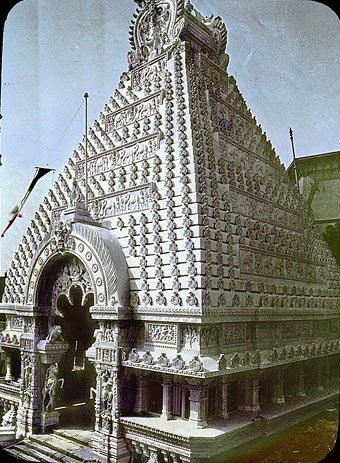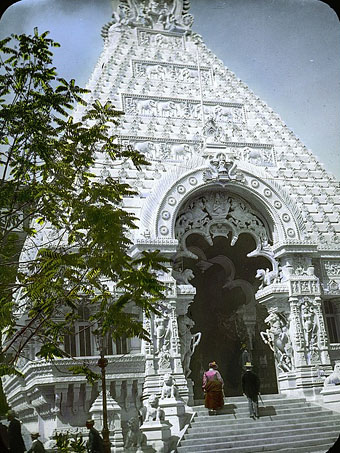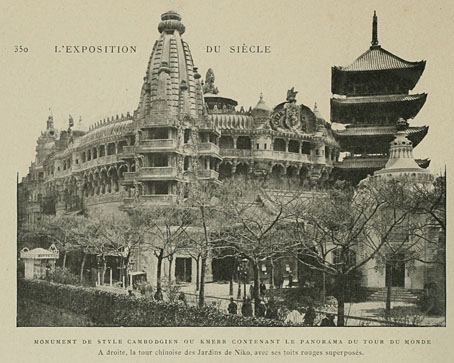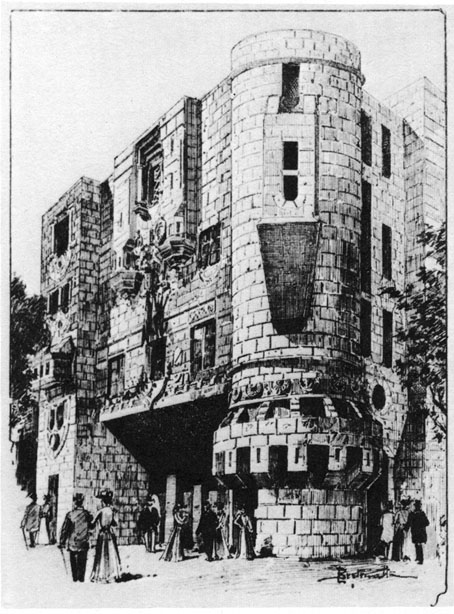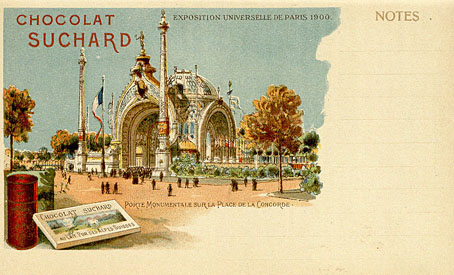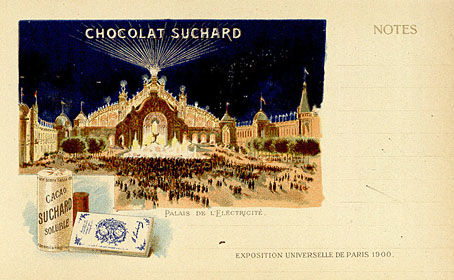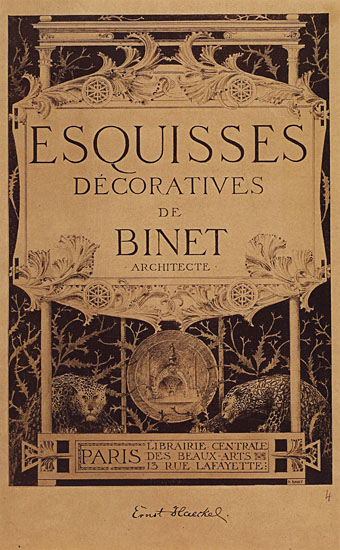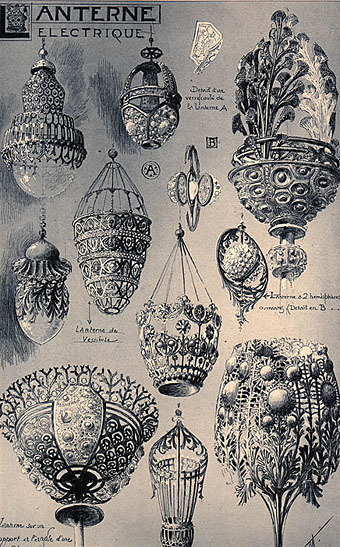Despite being one of the most striking and beautiful national pavilions in the Exposition Universelle of 1900, the Cambodian building seldom features isn’t featured in any of the exposition guides I’ve seen. These photos are from the excellent set of William Henry Goodyear views presented by the Brooklyn Museum at Flickr. If it wasn’t for the people visible in the picture below (and the Parisian lamp-post) you wouldn’t know these were from the exposition at all.
Another trace of Cambodia appeared via the Tour of the World exhibition where a variety of “exotic” buildings were forced to occupy the same plot of ground. This group does appear in the guides, the view here being from L’Exposition du Siècle by Albert Quantin. The multi-story confection dominating this scene may superficially resemble some of the Angkor temples, but for me it’s more reminiscent of buildings like the Casa Milà which Antoni Gaudí was constructing in Barcelona a few years later.
Previously on { feuilleton }
• Le Manoir a l’Envers
• Suchard at the Exposition Universelle
• Esquisses Décoratives by René Binet
• Le Palais de l’Optique, 1900
• Exposition Universelle films
• Exposition jewellery
• Exposition Universelle catalogue
• Exposition Universelle publications
• Exposition cornucopia
• Return to the Exposition Universelle
• The Palais Lumineux
• Louis Bonnier’s exposition dreams
• Exposition Universelle, 1900

